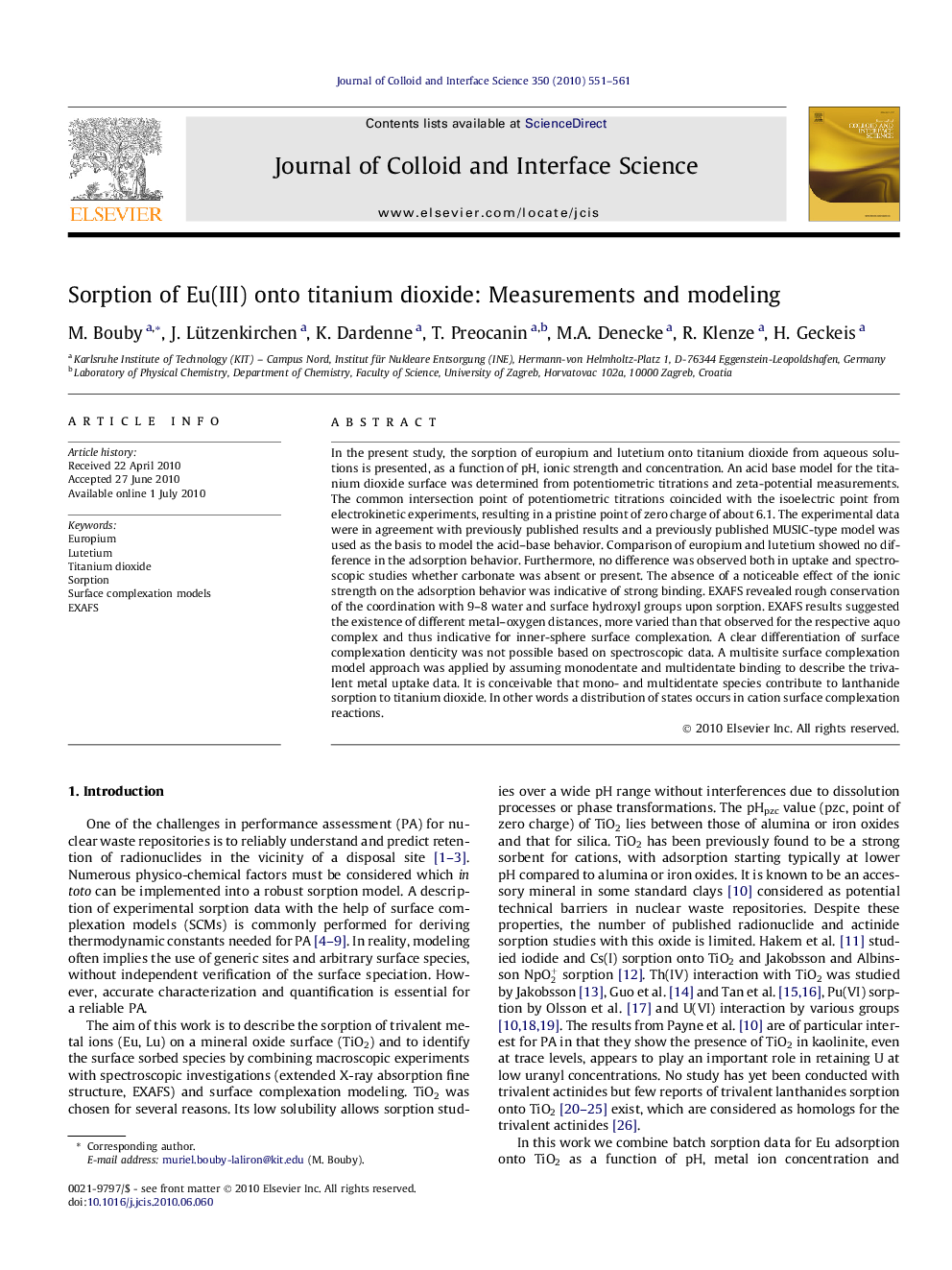| Article ID | Journal | Published Year | Pages | File Type |
|---|---|---|---|---|
| 609155 | Journal of Colloid and Interface Science | 2010 | 11 Pages |
In the present study, the sorption of europium and lutetium onto titanium dioxide from aqueous solutions is presented, as a function of pH, ionic strength and concentration. An acid base model for the titanium dioxide surface was determined from potentiometric titrations and zeta-potential measurements. The common intersection point of potentiometric titrations coincided with the isoelectric point from electrokinetic experiments, resulting in a pristine point of zero charge of about 6.1. The experimental data were in agreement with previously published results and a previously published MUSIC-type model was used as the basis to model the acid–base behavior. Comparison of europium and lutetium showed no difference in the adsorption behavior. Furthermore, no difference was observed both in uptake and spectroscopic studies whether carbonate was absent or present. The absence of a noticeable effect of the ionic strength on the adsorption behavior was indicative of strong binding. EXAFS revealed rough conservation of the coordination with 9–8 water and surface hydroxyl groups upon sorption. EXAFS results suggested the existence of different metal–oxygen distances, more varied than that observed for the respective aquo complex and thus indicative for inner-sphere surface complexation. A clear differentiation of surface complexation denticity was not possible based on spectroscopic data. A multisite surface complexation model approach was applied by assuming monodentate and multidentate binding to describe the trivalent metal uptake data. It is conceivable that mono- and multidentate species contribute to lanthanide sorption to titanium dioxide. In other words a distribution of states occurs in cation surface complexation reactions.
Graphical abstractTitanium dioxide potentiometric titrations (A) and zeta-potential data in addition to Eu sorption onto TiO2 as a function of ionic strength, pH and metal ion concentration (B) are modeled.Figure optionsDownload full-size imageDownload high-quality image (245 K)Download as PowerPoint slideResearch highlights► Trivalent metal ions (Eu, Lu) sorption study onto TiO2 ► Surface sorbed species identification ► Variable parameters: pH, metal concentration, solid–liquid ratio, ionic strength ► EXAFS results and multisite complexation (MUSIC) modeling ► Simultaneous mono and multidentate species contribution to the sorption.
